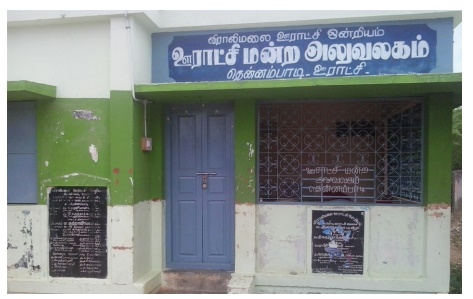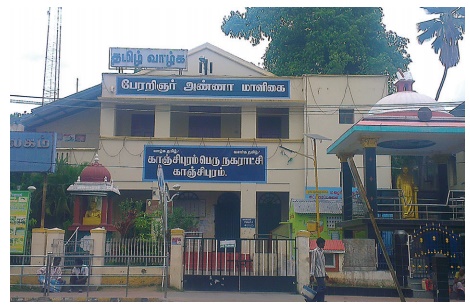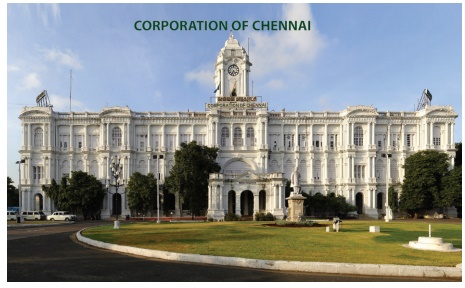Fiscal Economics - Local Finance and Types of Local Bodies | 12th Economics : Chapter 9 : Fiscal Economics
Chapter: 12th Economics : Chapter 9 : Fiscal Economics
Local Finance and Types of Local Bodies
Local Finance
Local finance refers to the finance of local bodies in India.
There is a large variety of local bodies in India. We have the following main
four local bodies which are functioning today in our country:
Types of Local Bodies
1.
Village Panchayats
2.
District Boards or ZilaParishads
3.
Municipalities
4.
Municipal Corporations
1. Village Panchayats:

Establishment: The jurisdiction of a panchayat is
usually confined to one revenue village. In some cases, though not very
frequently, two or more small villages are grouped under one panchayat. The
establishment of panchayat raj is the avowed policy of most states in India.
Functions
a) The functions of panchayats range over a wide area including
civil, economic and so on. Thus small disputes may be disposed of by panchayats
on the spot.
b) Roads, primary schools, village dispensaries etc. are to be
managed by panchayats.
c) The supply of water, both for drinking and irrigation, falls
within their field of responsibility, and in some cases farming, marketing,
storage, etc. are entrusted to them.
Sources of revenue of Village Panchayats
The following are the sources of revenue of village panchayats.
i.
general property tax,
ii.
taxes on land,
iii.
profession tax, and
iv.
tax on animals and vehicles.
Other taxes include service tax, octroi, theatre tax, pilgrim tax,
tax on marriage, tax on birth and deaths, and labour tax. As a matter of fact,
taxes are levied by the panchayats only with the sanction of the state
government, and there are certain limits in respect of tax rates which have to
be observed.
2. District Boards Or ZilaParishads:

Establishment: In rural areas, district boards or Zila
Parishads are established at district level. The territorial jurisdiction of a
district board is generally a revenue district.
Functions
In Tamil Nadu, the Zila Parishad is a co-ordinating body which
exercises general supervision over the working of Panchayat Samitis and advises
them on implementation of Development Schemes.
Sources of revenue of District Boards
i.
Grants-in-aid from the state government.
ii.
Land Cesses.
iii.
Toll, fees etc.
iv.
Income from the property and loans from the state governments.
v.
Grants for the centrally sponsored schemes relating to development
work.
vi.
Income from fairs and exhibitions.
vii.
Property tax and other taxes which the state governments may
authorise the district boards.
3. Municipalities

Establishment and Functions: The municipalities are bodies or
institutions which are established in urban areas for looking after local
affairs, such as, sanitation, public health, local roads, lighting, water
supply, cleaning of streets, maintenance of parks and gardens, maintenance of
hospitals, dispensaries and veterinary hospitals, provision of drainage,
provision of primary education, organising of fairs and exhibitions etc.
However, all these functions are performed subject to the control of the state
government.
Sources of revenue of municipalities
i.
taxes on property
ii.
taxes on goods, particularly octroi and terminal tax
iii.
personal taxes, taxes on profession, trades and employment
iv.
taxes on vehicles and animals
v.
theatre or show tax, and
vi.
grants-in-aid from state government.
4. Municipal Corporations

Establishment and Functions:
The municipal corporations have wide powers and enjoy greater
freedom as compared to municipalities. The municipal corporations are usually
entrusted with the functions, such as, water supply and drainage, lighting,
roads, slum clearance, housing and town planning etc. The rapid increase in the
population of cities has definitely added to the functions of municipal
corporations.
Sources of revenue of Corporations
i.
tax on property,
ii.
tax on vehicles and animals,
iii.
tax on trades, calling and employment,
iv.
theatre and show tax,
v.
taxes on goods brought into the cities for sale,
vi.
taxes on advertisements,
vii.
octroi and terminal tax etc.
The corporations have a fair degree of freedom in respect of their
choice and modification of these taxes, subject to the maximum and minimum
rates laid down by the law.
Related Topics